insects, bugs & local wildlife insights for youngsters: 2023
Common Crow Butterfly Euploea Core
You may be seeing a few of these butterflies around our area at the moment, the Common Crow Butterfly Euploea core.
It belongs to the crows and tigers subfamily Danainae (tribe Danaini). E. core is a glossy-black, medium-sized 85–95 mm (3.3–3.7 in) butterfly with rows of white spots on the margins of its wings. E. core is a slow, steady flier. Due to its unpalatability it is usually observed gliding through the air with a minimum of effort. As caterpillars, this species sequesters toxins from its food plant which are passed on from larva to pupa to the adult. While feeding, it is a very bold butterfly, taking a long time at each bunch of flowers. It can also be found mud-puddling with others of its species and often in mixed groups. The males of this species visit plants like Crotalaria and Heliotropium to replenish pheromone stocks which are used to attract a female during courtship.
It is found in southern Pakistan, Sri Lanka, India, Bangladesh, Myanmar, Russia, and Australia. In its range E. core is found at all elevations, right from sea level up into the mountains to 2,400 metres (8,000 ft). It can be observed in all layers of vegetation and in all types of regions from arid land to forested areas. It can as commonly be seen gliding over the treetops as flitting about a foot off the ground searching for nectar flowers. In thick forests it is often seen moving along open tracks or following the course of a river.
.jpg?timestamp=1679546453166)
Photo taken in Careel Bay, March 2023. Pic; AJG
The butterfly, being protected by its inedibility, has a leisurely flight. It is often seen flying about shrubs and bushes in search of its host plants. It visits a large variety of flowering plant species. When gliding E. core holds its wings at an angle just greater than the horizontal plane, maintaining its flight with a few measured wingbeats.
E. core is a nectar lover and visits flowers unhurriedly. It seems to prefer bunches to individual flowers. When feeding the butterfly is unhurried and is not easily disturbed. It can be approached closely at this time. On hot days large numbers of these butterflies can be seen mud-puddling on wet sand. E. core is an avid mud-puddler often congregating in huge swarms along with other Euploea species as well as other danaids.
Eggs are laid on the underside of young leaves of the host plants. The egg is shiny white, tall and pointed, with ribbed sides. Just before hatching the eggs turn greyish with a black top. Throughout its life the caterpillar stays on the underside of the leaves. The caterpillar is uniformly cylindrical, vividly coloured and smooth. It has alternate white and dark brown or black transverse bands. Just above the legs and prolegs, along the entire body is a wide orangish-red band interspersed with black spiracles.
The adult butterfly has a life span of 11 - 13 weeks. The adults feed upon nectar from various flowering plants, including eucalypts.
Praying Mantis
Mantises are an order (Mantodea) of insects that contains over 2,400 species in about 460 genera in 33 families. The largest family is the Mantidae ("mantids"). Mantises are distributed worldwide in temperate and tropical habitats. They have triangular heads with bulging eyes supported on flexible necks. Their elongated bodies may or may not have wings, but all Mantodea have forelegs that are greatly enlarged and adapted for catching and gripping prey; their upright posture, while remaining stationary with forearms folded, has led to the common name praying mantis.
The closest relatives of mantises are termites and cockroaches (Blattodea), which are all within the superorder Dictyoptera.
Mantises are sometimes confused with stick insects (Phasmatodea), other elongated insects such as grasshoppers (Orthoptera), or other more distantly related insects with raptorial forelegs such as mantisflies (Mantispidae). Mantises are mostly ambush predators, but a few ground-dwelling species are found actively pursuing their prey.
They normally live for about a year. In cooler climates, the adults lay eggs in Autumn. The eggs are protected by their hard capsules and hatch in the Spring.
The earliest mantis fossils are about 140 million years old, from Siberia.
Mantises have stereo vision. In 2018 the team at Newcastle University, UK has discovered that mantis 3D vision works differently from all previously known forms of biological 3D vision. 3D or stereo vision helps us work out the distances to the things we see. Each of our eyes sees a slightly different view of the world. Our brains merge these two views to create a single image, while using the differences between the two views to work out how far away things are. But humans are not the only animals that have stereo vision. Other animals include monkeys, cats, horses, owls and toads, but the only insect known to have stereo vision is the praying mantis.
This so-called 3D vision - also known as stereopsis - is how creatures with binocular vision produce depth perception when they're taking in the world.
They locate their prey by sight; their compound eyes contain up to 10,000 ommatidia. An insect's compound eye is made up of many individual units packed together to form the surface of the eye. These units are hexagonal in shape and called 'ommatidea' (singular ommatidium). Each eye can have more than a thousand ommatidea.
A small area at the front called the fovea has greater visual acuity than the rest of the eye, and can produce the high resolution necessary to examine potential prey. The peripheral ommatidia are concerned with perceiving motion; when a moving object is noticed, the head is rapidly rotated to bring the object into the visual field of the fovea.
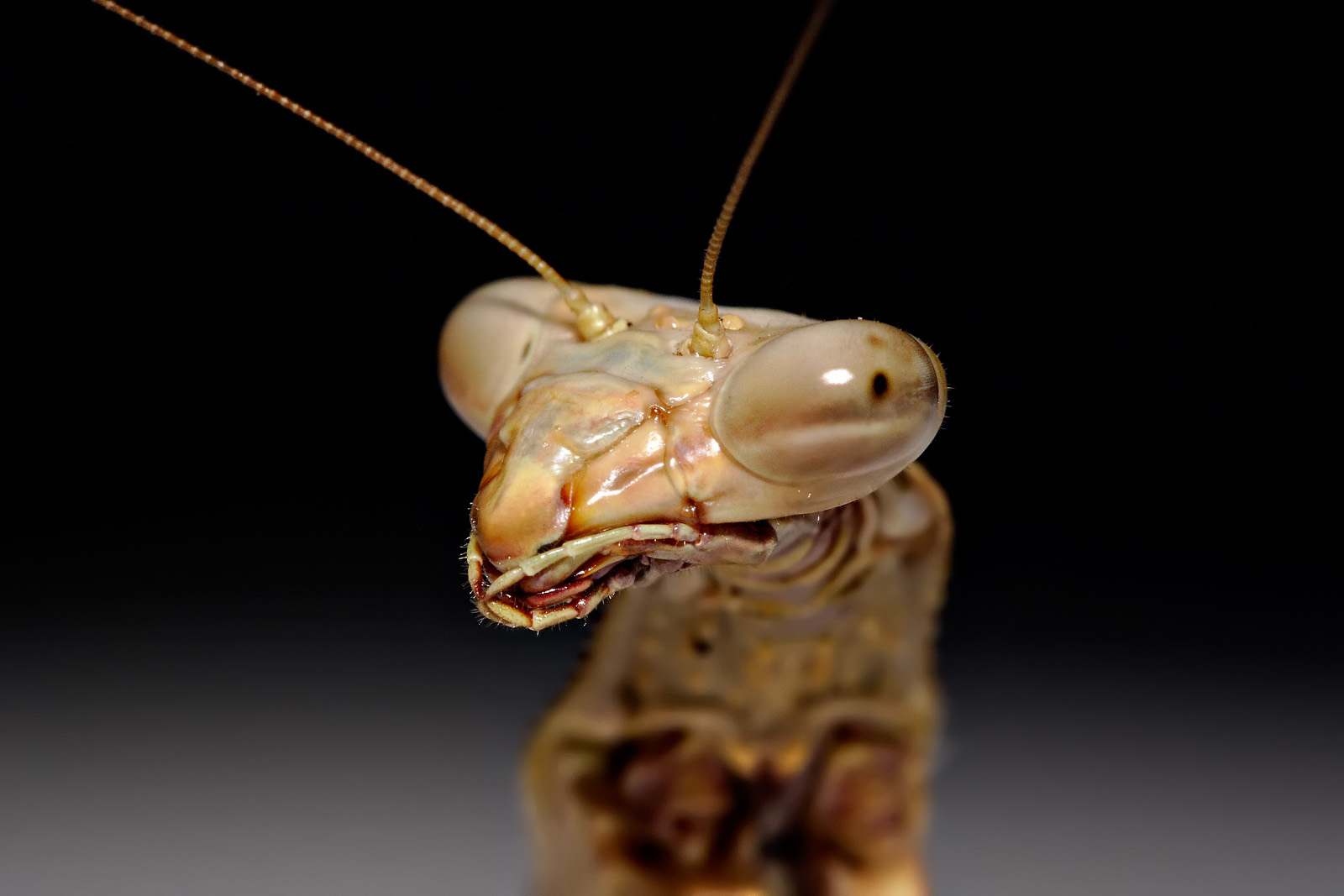
Head of Archimantis latistyla, showing the compound eyes and labrum. Taken in Swifts Creek, Victoria, Australia. Photo: Fir0002
A praying mantis filmed this week in Avalon Beach:
Phoracantha Semipunctata: The Australian Eucalyptus Longhorn
This week an insect with a pretty shell came inside the house. After taking a photo and looking it up we found out it is a Eucalyptus longhorn, and a species of beetle in the family Cerambycidae.
Longhorn beetles (Cerambycidae), also known as long-horned or longicorns (whose larvae are often referred to as roundheaded borers), are a large family of beetles, with over 35,000 species described. Most species are characterized by extremely long antennae, which are often as long as or longer than the beetle's body.
Native to Australia, the Australian Eucalyptus Longhorn has now spread to many parts of the world, including practically all countries where tree species of Eucalyptus have been introduced. It has been classified as an invasive pest species of Eucalyptus outside Australia.
Within Australia, Phoracantha semipunctata primarily seeks decaying trees and branches.
Phoracantha semipunctata are typically dark brown and beige in colour and are approximately similar in size measuring at around 2.3cm long. They are most active during the early dusk hours, and are found in populations within host trees, which are predominantly male-oriented. These host trees are determined according to the suitability of adult mating and oviposition, and the viability of larvae development.
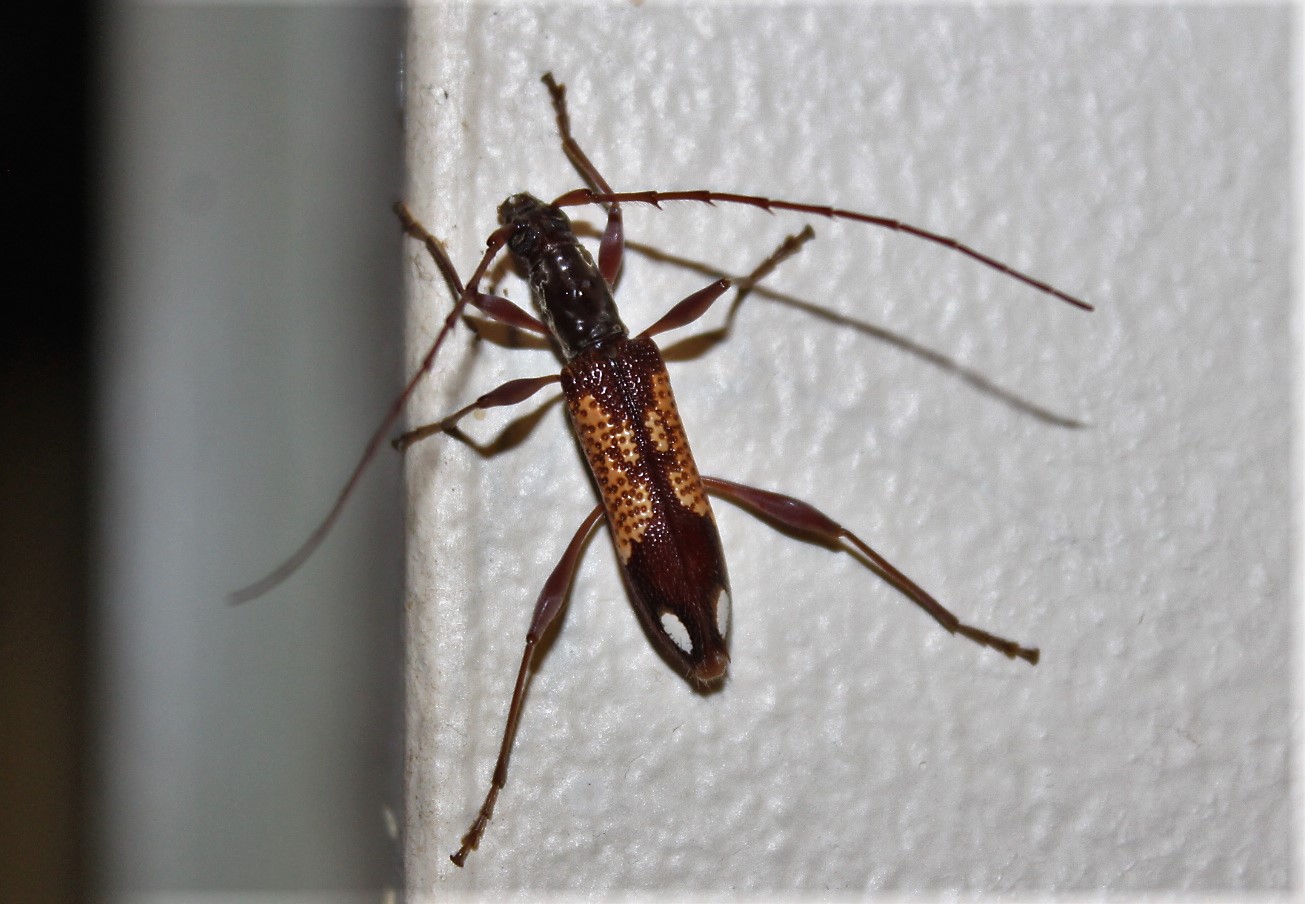
There are 4 key processes that occur within its lifecycle — Egg, larval, pupation and adult.
Female Phoracantha semipunctata lay approximately a batch of 40 eggs, where eggs are laid below detached bark, present within stressed host trees.
After the eggs hatch, larvae emerge and begin acquiring nutrients from the cambium and phloem segments, excavating through the external layer of bark to consume in the inner bark and exterior xylem tissues.
Pupation will occur after larvae development. Larvae Phoracantha semipunctata, will establish pupal chambers, within the sapwood or in some cases the heartwood, where they will develop into adult beetles. Pupation may take up to 10 days.
After pupation, adult Phoracantha semipunctata will then begin digging themselves out the pupal chamber in which they will then create a 8-10mm opening in the external bark layer. The total life cycle of P. semipunctata varies; however, in host trees with high larvae competition, their total lifecycle may be significantly depleted and only span up to two months.
Phoracantha semipunctata eggs and larvae are subject to various natural predators which may diminish their viability during the development process. Braconid parasites, including Syngaster lepidus, and Bracon capitator have been recorded to have negative effects. These female wasps infuse a certain venom within the larvae, stopping any further development and feeding that can be done.
There are also other species of beetle which lower larvae survivorship, including Trogodendron fasciculatum and Aeschyntelus vittatus.
Trogodendron fasciculatum, the yellow-horned clerid, is a small beetle of the family Cleridae (checkered beetles). It too is native to Australia, and feeds on other insects.
.jpg?timestamp=1678556922554)
Clerid beetle of the species Trogodendron fasciculatum (Schreibers) or yellowhorned clerid. Taken in January 2007 on a eucalyptus tree in Swifts Creek, Victoria, Australia. Photo: Fir0002/Flagstaffotos
Ants are also a problem for them as they simply carry the beetle eggs within Eucalyptus trees off to their own nest.
The resilience of Eucalyptus species to these insects is best achieved by looking after these. Making sure there is sufficient water during long durations of dry condition helps as longhorns need dry trees that are not too well to thrive and 'bore' into them.
Certainly not a 'boring' place to be though - seeing what comes indoors or what lives in the garden.
LITTLE SHIPS OF BAYVIEW.
The little ships of Bayview they are bravely slim and small,They go out by Barrenjoey, where they shouldn't go at all;
You may watch their bowsprits tossing, where the coastal steamers go
These little ships of Bayview, with their sails as white as snow.
The little ships of Bayview, they come sailing In at night,
With a silver path behind them, and the moon to mark their flight;
There are shaky lights at Newport, and an arch of stars that know
The little ships of Bayview, with their sails as -white us snow.
There are songs across the water, as the little ships go by,
To their anchor-buoys at Bayview, where the sleepy houses lie;
Faint and drowsy nod their anchors, and the stars lean very low,
On the little ships of Bayview, with their sails as white as snow.
-GILBERT MANT.
LITTLE SHIPS OF BAYVIEW. (1925, August 22). The Sydney Morning Herald (NSW : 1842 - 1954), p. 11. Retrieved fromhttp://nla.gov.au/nla.news-article16237249
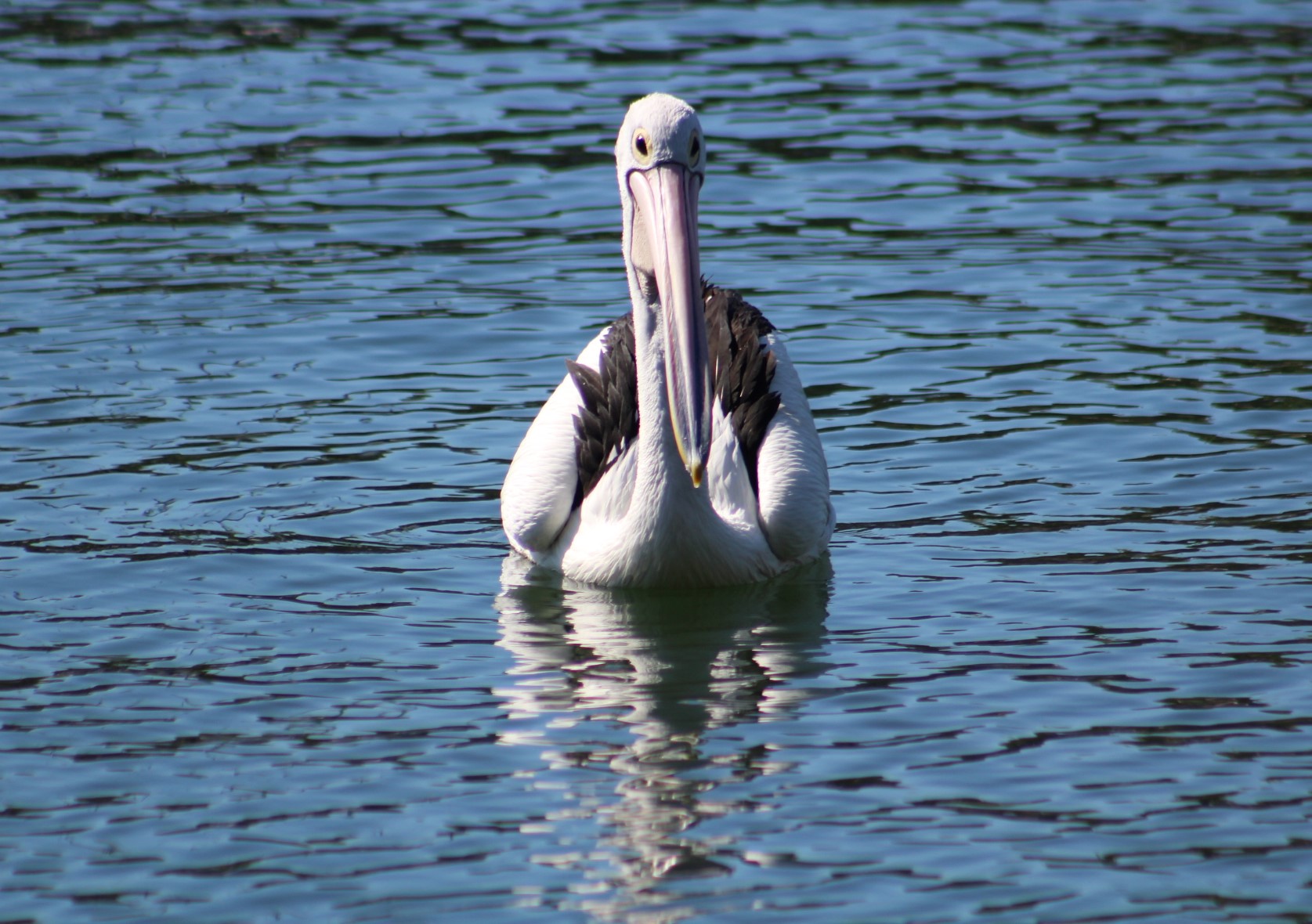
Pelican, Bayview, Pittwater - Saturday March 11, 2023
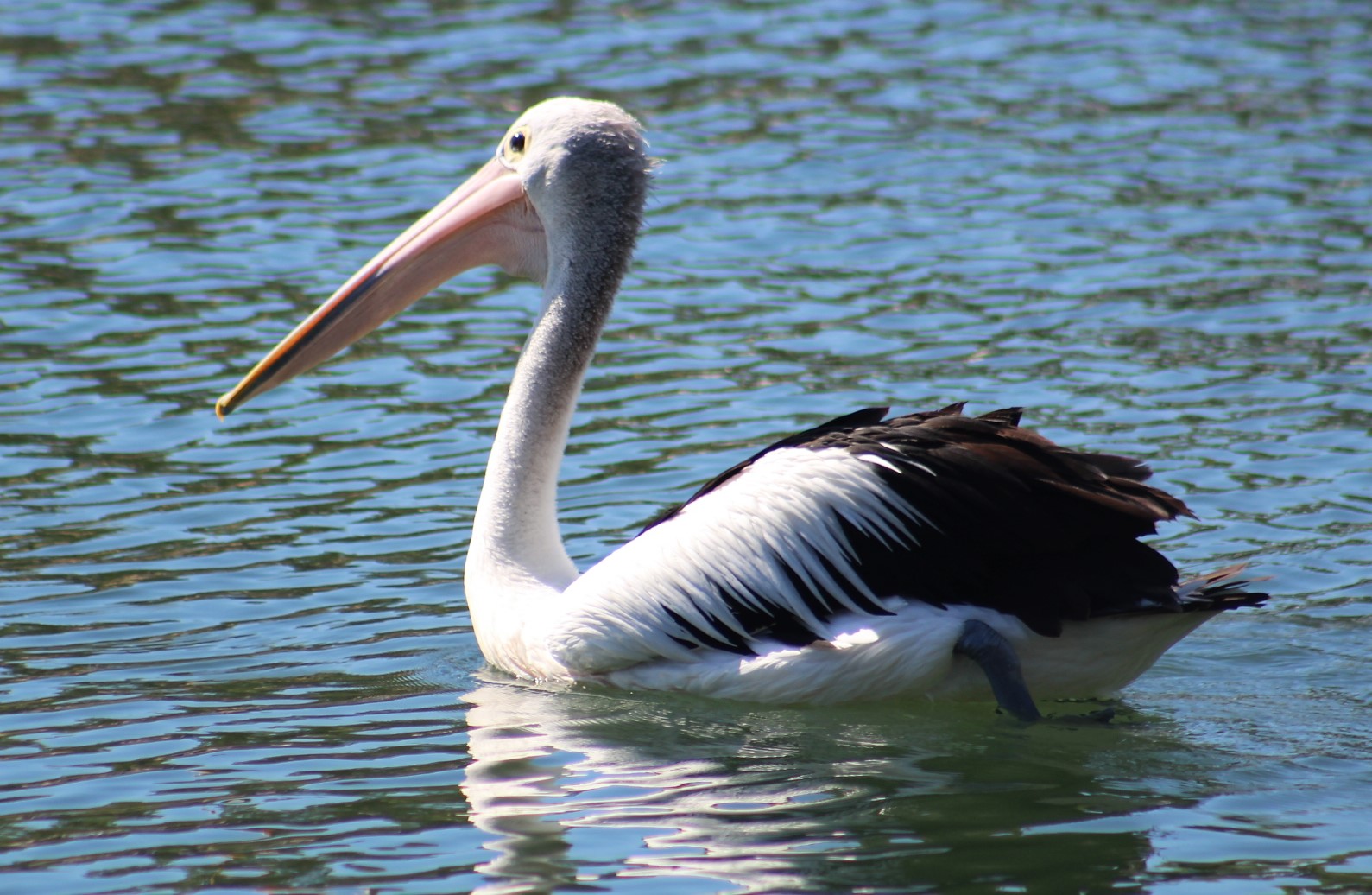
Swamp Wallaby At Palm Beach
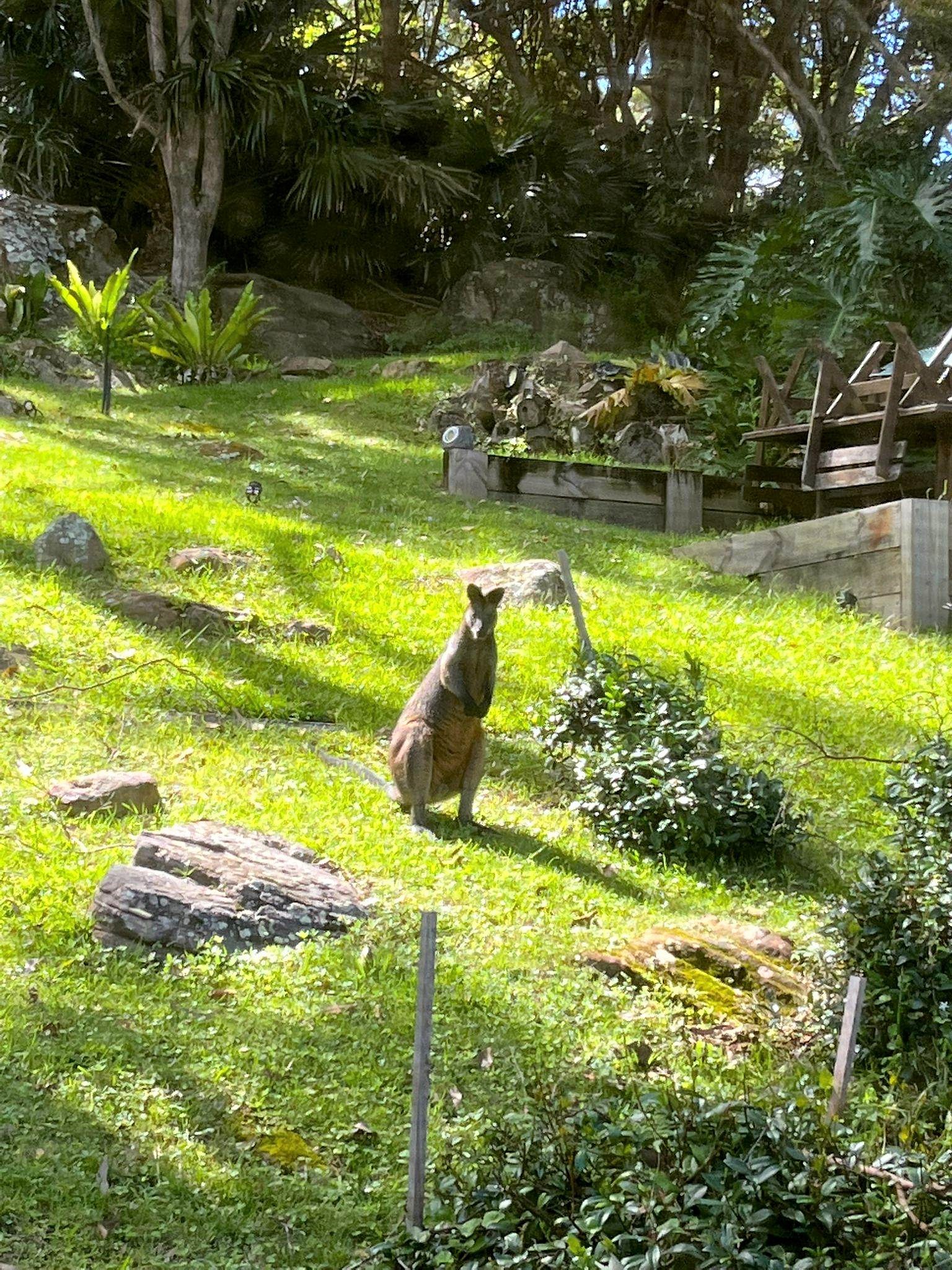
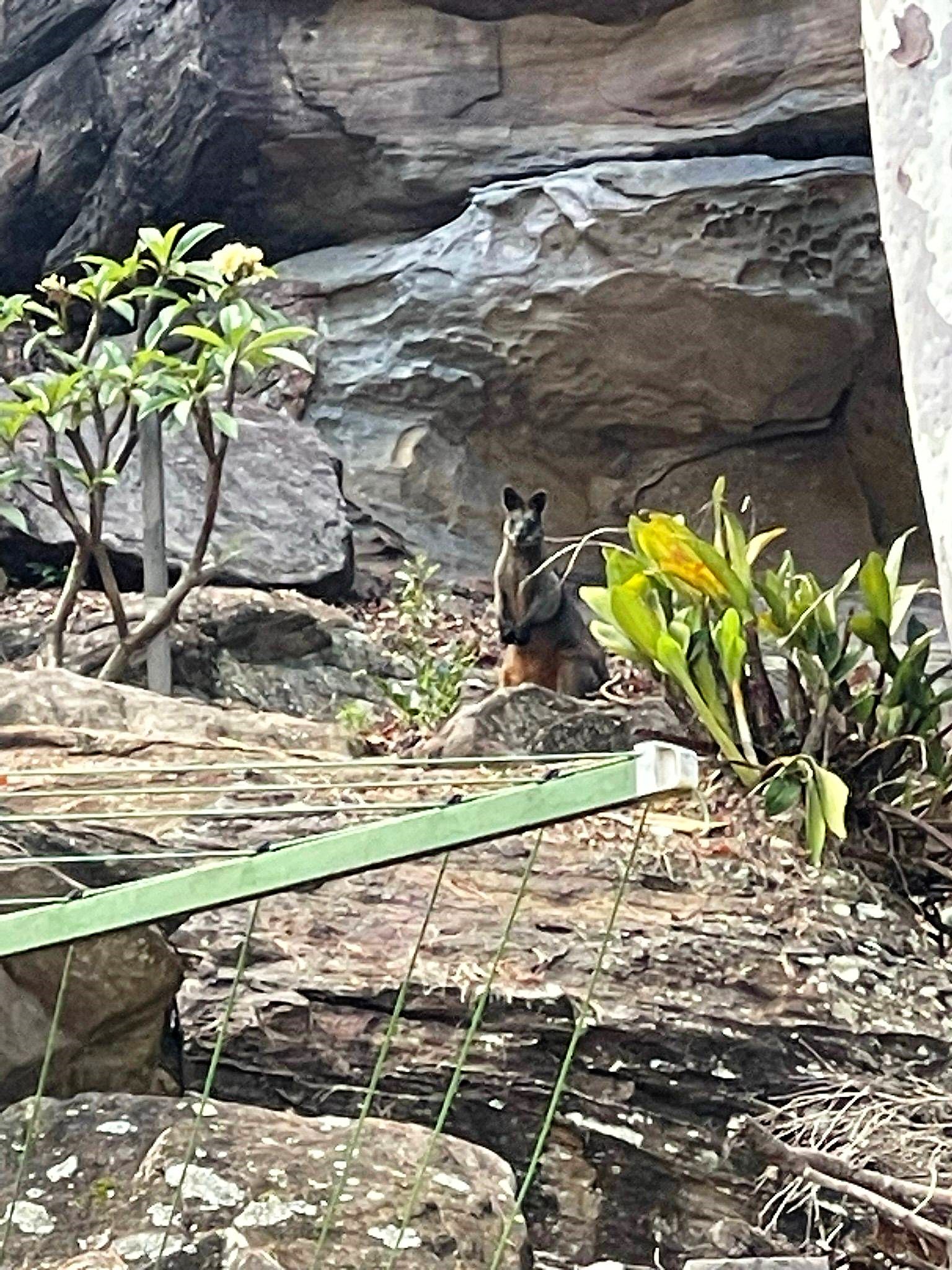
Leopold Slug
Following on from last week's Red Triangle Slug we've been keeping an eye on what's in the garden and this week want to tell you about this slug we found there. This is the largest of the introduced slugs found in Sydney. The word 'introduced' means someone brought it here as, unlike the Red Triangle Slug, it is not a native slug of Australia. Scientists tell us it was introduced during the 1800s.
.jpg?timestamp=1677867743918)
The name Leopard Slug is derived from the slug's dark spots on its light brown body and it's usually found in urban areas, and you will find it elsewhere in the south and east of Australia.
Its Scientific Name Limax maximus, literally means "biggest slug", and it is known by the common names great grey slug and leopard slug, is a species of slug in the family Limacidae, the keeled slugs. It is among the largest keeled slugs, Limax cinereoniger being the largest.
It can grow to up to 20 centimetres!
The Leopard Slug feeds on dead animal tissue, cat food and pet faeces.
Mating Leopard Slugs become entwined and lower themselves from their branch on a thread of mucus. Then they return to the branch via the mucous thread, eating it as they go. Like all slugs and snails, they are hermaphrodites – they have both male and female reproductive organs.
The eggs of this slug are deposited in a cluster, slightly attached to each other. Eggs are transparent, elastic and slightly yellowish in colour. The size of the egg is 6×4.5 mm, and like the Moth Eggs, so tiny you have to look closely to spot them. They hatch in about a month. The tiny slugs which emerge from the eggs need at least two years to reach maturity.
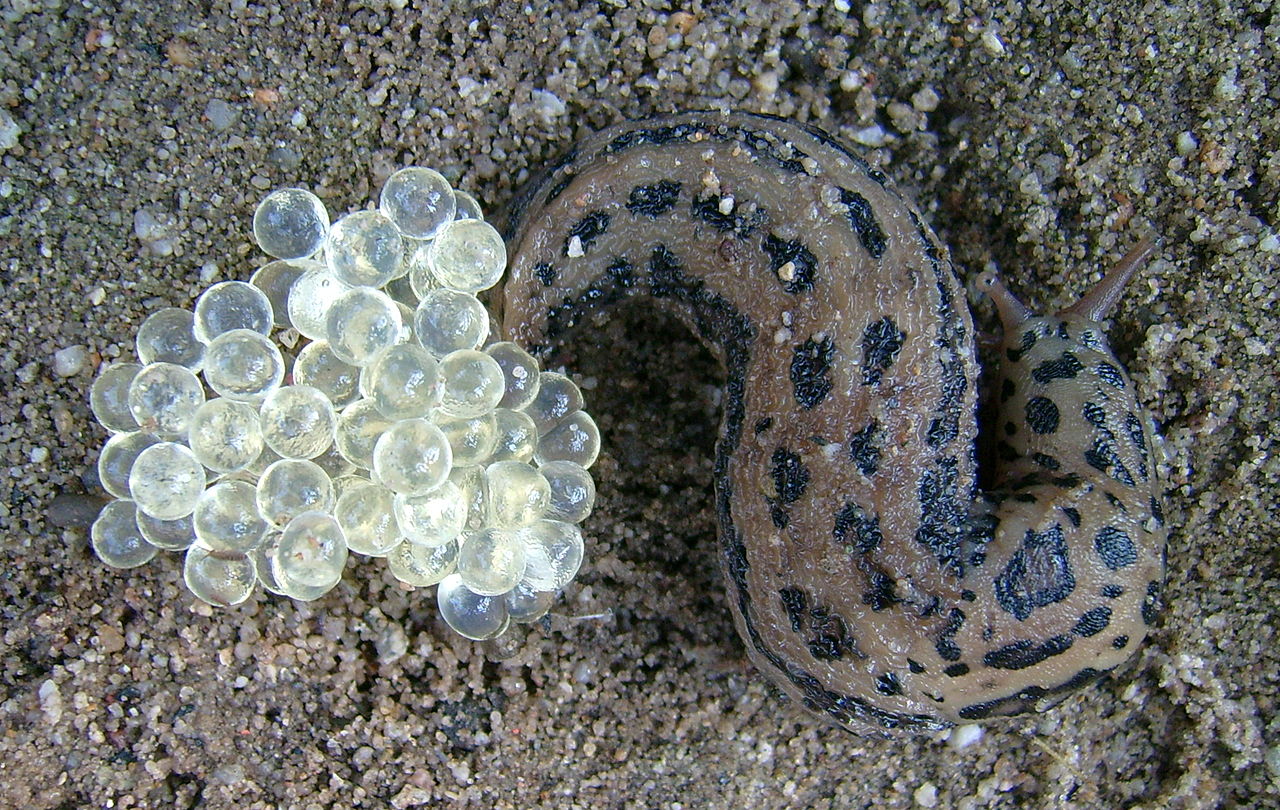
Leopold Slug with egg cluster. Photo: Lokilech
The greater part of the body is rounded, but there is a short keel on its tail, with about 48 longitudinal rows of elongate, detached tubercles. The shell of Limax maximus is reduced and internal, under the shield. The occurrence of this internal shell was known to Pliny the Elder as the shell was used by the ancient physicians for the sake of its carbonate of lime. The calcitic shell is situated beneath the hinder part of the shield, and is perceptible through the skin. The colour of the shell is whitish. The shape of the shell is oblong-oval and thin, slightly convex above, and correspondingly concave beneath, with a membranous margin.
Gaius Plinius Secundus (AD 23/24 – 79), called Pliny the Elder, was a Roman author, naturalist and natural philosopher, and naval and army commander of the early Roman Empire, and a friend of the emperor Vespasian. He wrote the encyclopaedic Naturalis Historia (Natural History), which became a model for all encyclopaedias.
He spent most of his spare time studying, writing, and investigating natural and geographic phenomena in the field - a bit like all of us when we get outdoors and look around; what's at our feet, what's up in that tree, what's slithering up the glass door over there?
Leopard Slugs dry out in the heat so are only active in damp weather, when you may suddenly find hordes of them all over your backyard and even in your house. It's a Leopold Slug party - hide the cat food!
Limax maximus is nocturnal, feeding at night - which is how we got this week's photo for you. It is not very active or prolific, and like a snail, when alarmed, or at rest, this slug merely draws its head within the shield, but does not otherwise contract its body. When irritated, it is said to expand its shield.
Avalon Dunes Bushcare Returns Sunday March 5th
Next will be on March 5, meeting at 8.30 in the parking area off Tasman Rd south.
We work until 11.30 but any time you can spare is wonderful.
We always find interesting insects and other wildlife. We can see the progress happening as we work in this corner of the 4.5ha dunes.
Call in to say hello or phone 0420 817 574 if you can't see us there.
New helpers very welcome, and there's always something yummy for morning tea.
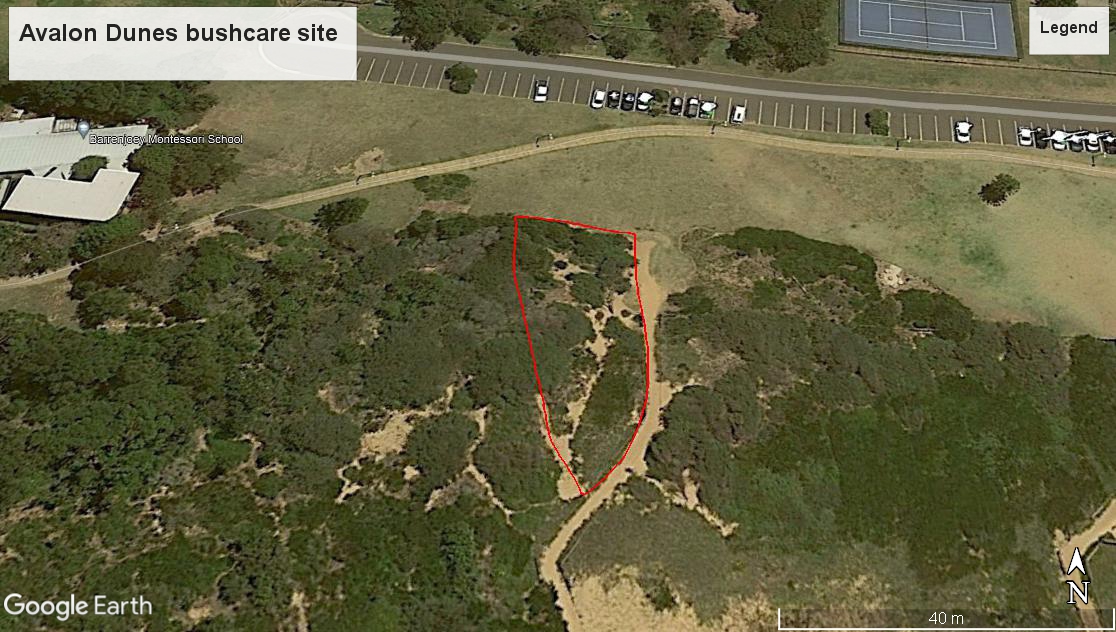
Our bushcare area is within the red lines. We can work in the shade in summer, or in sun in winter. Barrenjoey High school is to the north.
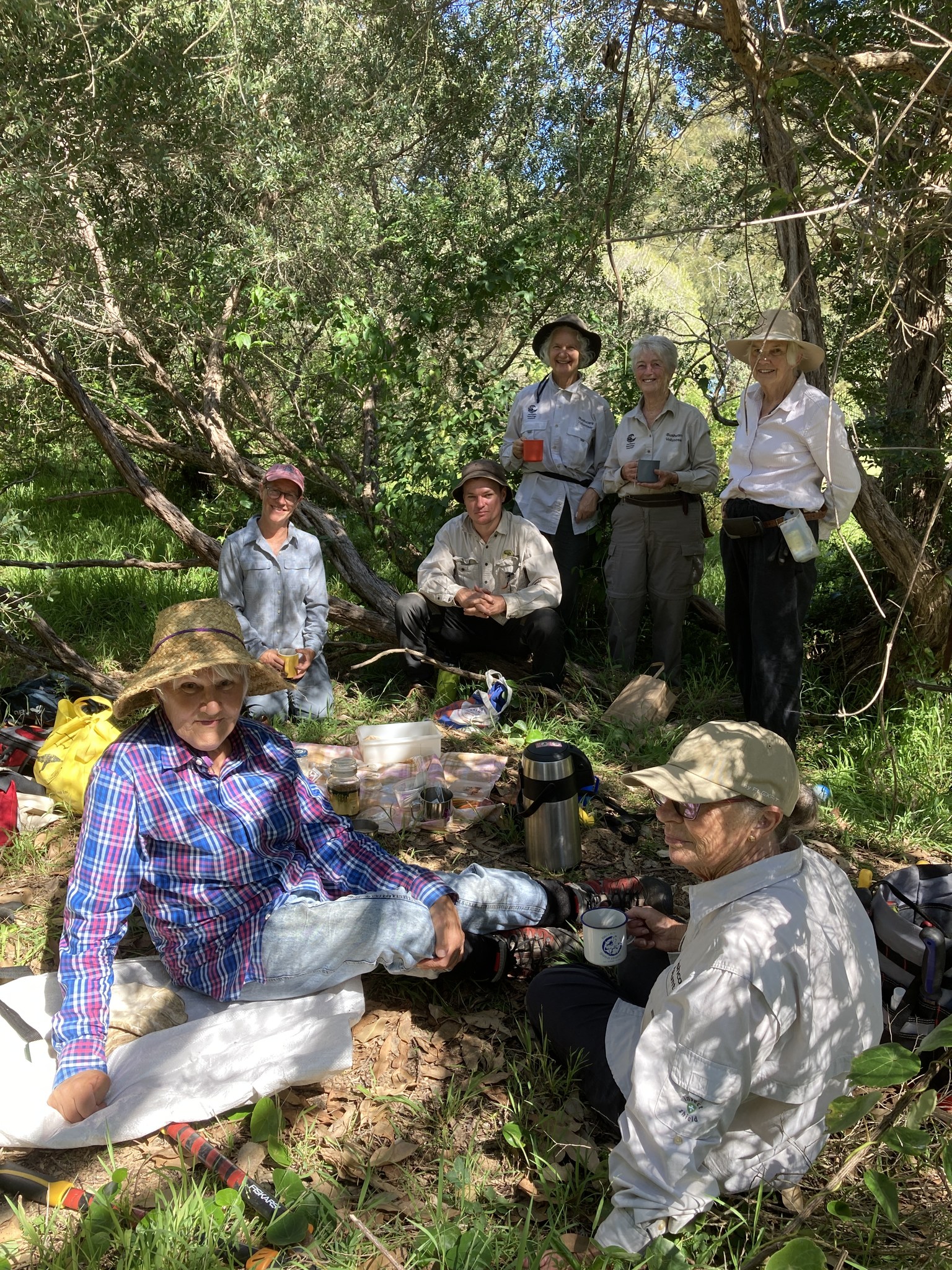
Morning tea with good company and cake.
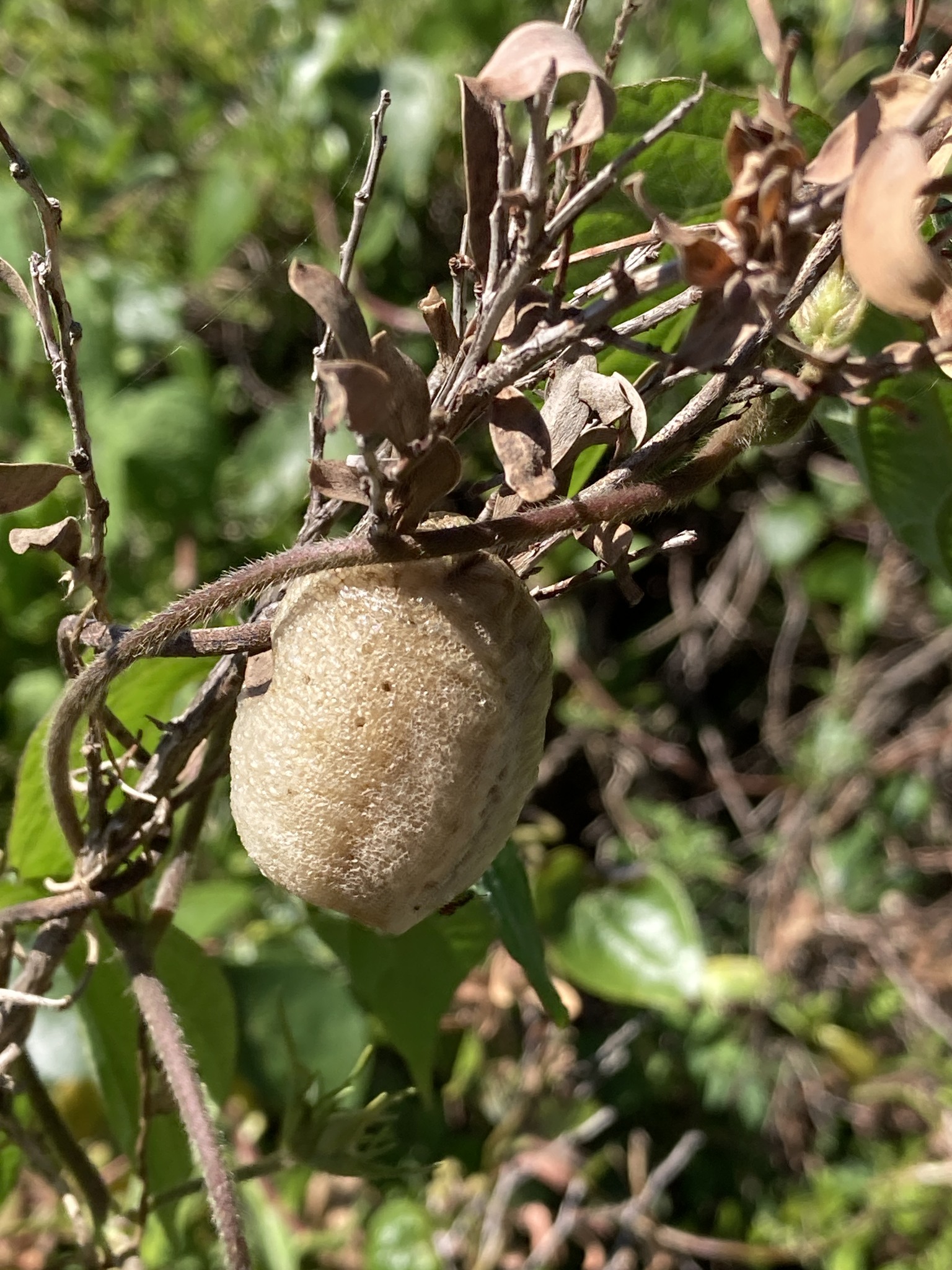
The egg case or ootheca of a Praying Mantis. Each ootheca contains a number of eggs, up to 200 with some species. Mantis eggs can take anywhere from 40 days to around five months to hatch. On hatching, the baby mantises are about as big as a large ant. The tiny holes on this one suggest the eggs have hatched.
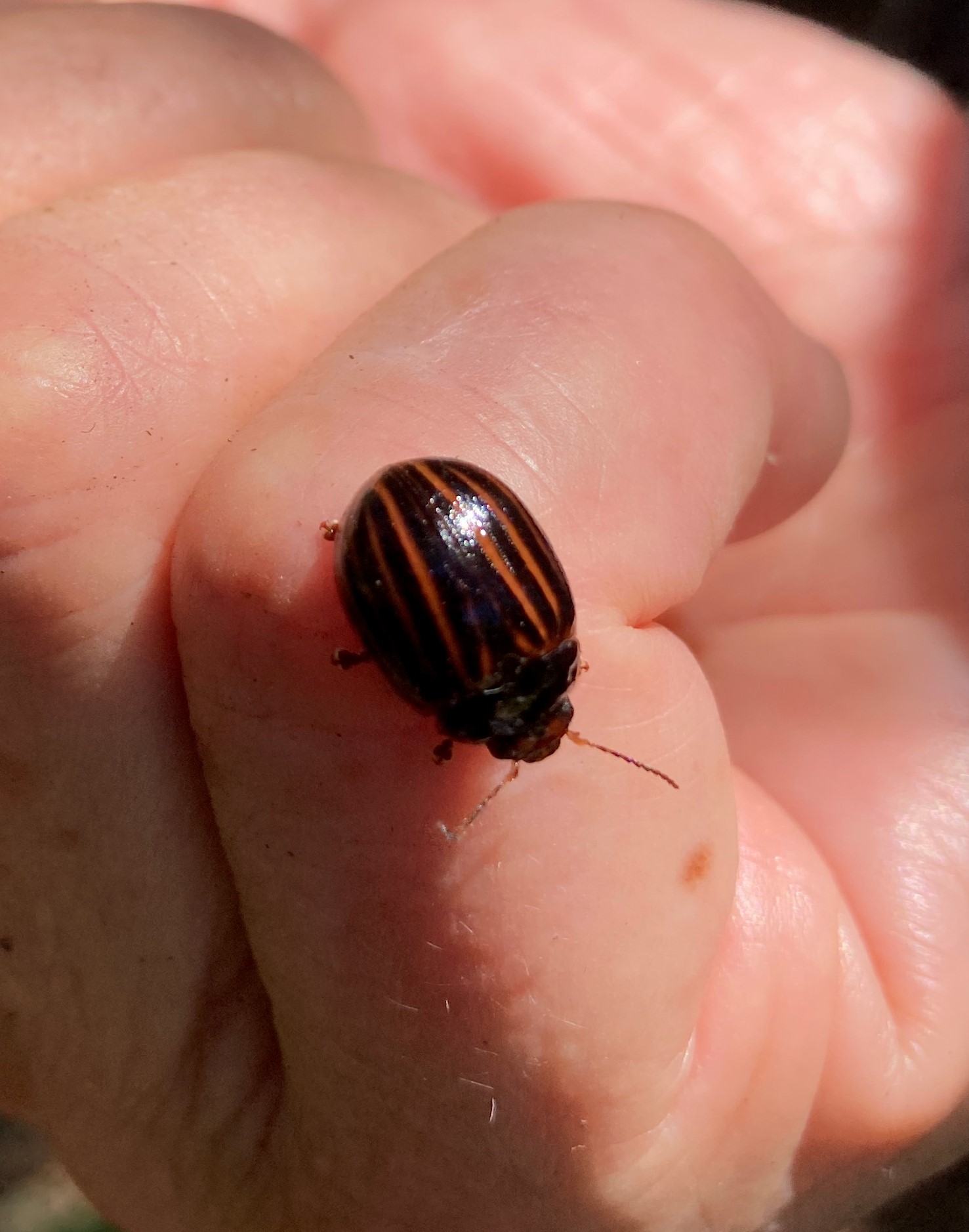
This Leaf Beetle in the genus Paropsisterna. It has been feeding on Eucalypt or Acacia foliage. It is one of Australia's many beetles. The total species number is estimated to be in the range of 80,000 to 100,000.
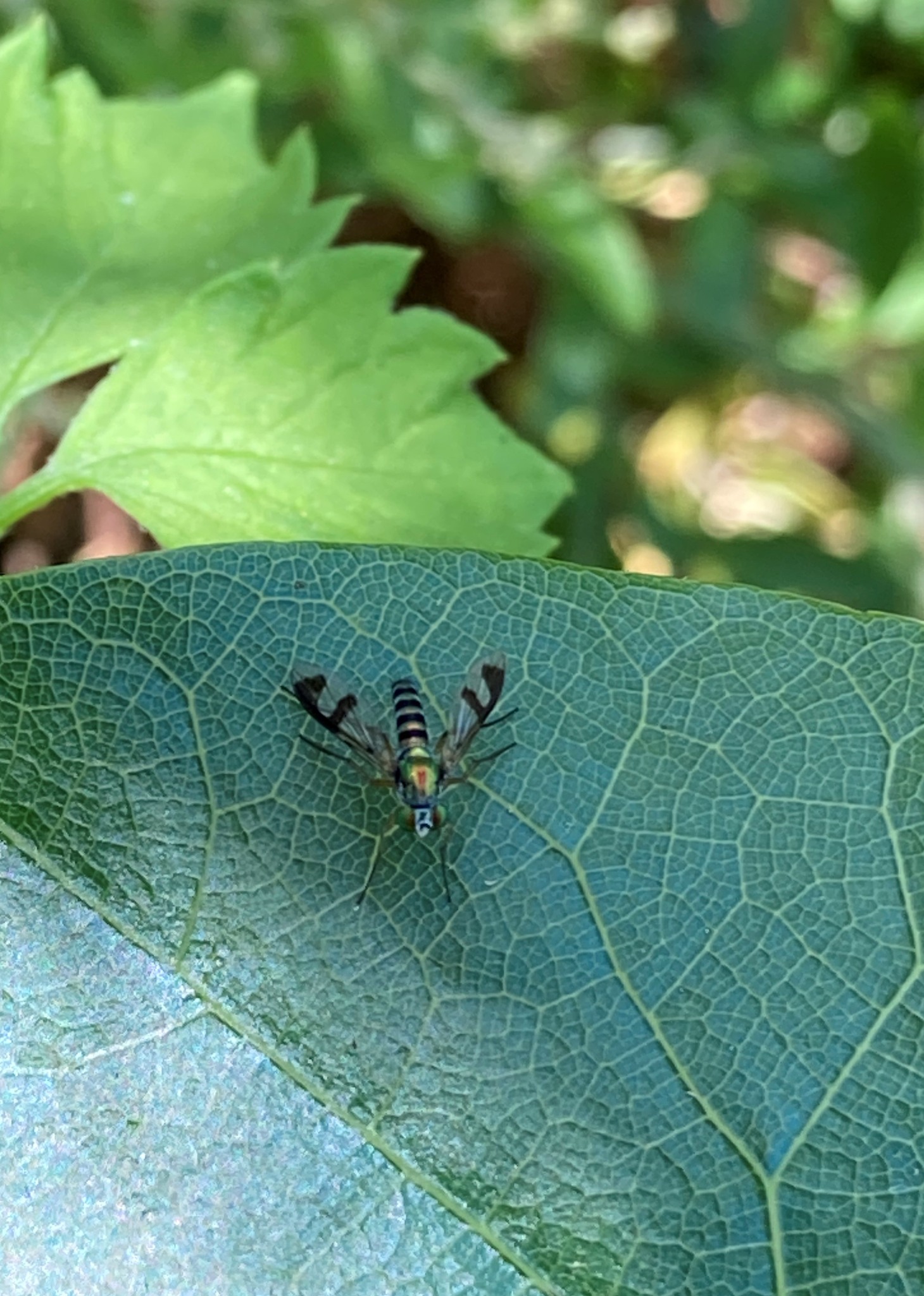
A long-legged Dancing Fly pauses on a leaf of Snake Vine.
Photos; PNHA
Little Penguin Released Back Into Ocean At Palm Beach After Lifesaving Care At Taronga Wildlife Hospital
A Little Penguin is now back in the ocean after having made a full recovery from life-threatening injuries. The female bird had been treated at Taronga Wildlife Hospital in Sydney for seven weeks, but was relaxed and healthy when the hospital team released her off Sydney’s Palm Beach on Monday February 20th 2023.
“Nothing beats the feeling of being able to release a fully recovered Little Penguin back into the wild,” Taronga Wildlife Hospital Rescue and Rehabilitation Coordinator Libby Hall said.
The penguin was found lying lethargic with deep wounds on its back by a member of the public on Newcastle Beach on 1 January. Local wildlife group Hunter Wildlife Rescue brought the injured bird to Taronga Wildlife Hospital for specialist care.
Upon admission, the hospital team determined the penguin had three deep, rake-like wounds on her back, a gash on her belly and an injured right leg. She was examined under anaesthetic and x-rays were taken to ensure no other injuries were present.
“Although it is difficult to know exactly what has happened, judging by the pattern of the wounds she could have been attacked by another animal - potentially a sea eagle or even a dog,” Taronga Wildlife Hospital Veterinary Officer Frances Hulst said.
The penguin received full supportive care and pain relief, as well as regular wound care at the Taronga Wildlife Hospital during her stay. She also spent several weeks in the hospital’s dedicated rehabilitation area, where she was able to swim and exercise to regain her fitness and strength.
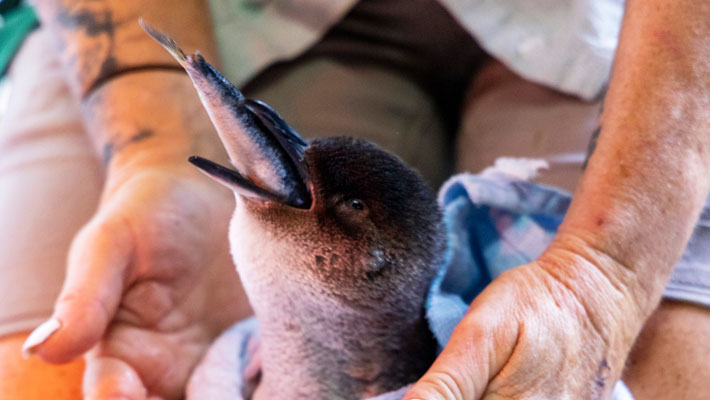
“We decided to release her off Palm Beach because there is a Little Penguin colony nearby, and we suspect she may have temporarily been travelling further up the coast when she sustained her injuries,” Taronga Wildlife Hospital Rescue and Rehabilitation Coordinator Libby Hall said.
However, the danger isn’t over for this Little Penguin. Moulting season takes place around March for Little Penguins in NSW, during which they replace their entire set of feathers with new ones.
During this time, they remain out of the water and are unable to feed and can lose up to 50 percent of their body weight which makes them weak and vulnerable to predators on land.
“The moulting season is the most vulnerable time of the year for Little Penguins, and that’s when we see an increase in injured penguins being treated in our wildlife hospital,” Libby explained.
“We urge people to keep your dog on a leash where there may be wildlife, but this is more important than ever during the entire month of March for penguins in NSW. Little Penguins may be hiding in a cave near the beach while they moult, so you might not be able to see them with the human eye, but your dog will be able to smell them,” she added.
The Little Penguin is the world’s smallest penguin species, and it’s the only penguin to breed in Australia. Every year, 1500 animals are admitted to Taronga Wildlife Hospitals, and Taronga is the leading contributor to veterinary services in wildlife treatment and rehabilitation in NSW.
Taronga’s strategic priority is to increase its capacity to assist wildlife in need, which is why work is underway to build a new world-class wildlife hospital in Sydney.
The new Taronga Wildlife Hospital in Sydney – set to open in 2025 – will increase the hospital’s capacity to hold and care for injured wildlife including turtles, koalas and platypus and other native animals by 400 percent.
The project is a joint philanthropic project between Taronga and the NSW State Government, with the NSW State Government matching philanthropic donations to Taronga up to $40 million.
.jpg?timestamp=1677117696224)
Photos: Little penguin being fed while in care and Taronga Wildlife Hospital Veterinary-Officer-Frances Hulst checking up on penguin. Images: Taronga Wildlife Hospital
White Slug Comes Out To Feast After The Rains
This slug (Triboniophorus graeffei) feeds on microscopic algae on smooth bark eucalypts, and algae on other smooth surfaces, leaving a narrow wiggly track. The Red Triangle Slug is Australia's largest native land slug. The distinctive red triangle on its back contains the breathing pore. This one was photographed in the Pittwater Online backyard this morning, Wednesday February 22nd, amid all the rain we've had overnight.
.jpg?timestamp=1677016447101)
Moth Eggs
It's that time of year when all the insects that have been busy feeding and flitting during Summer are laying eggs. This one was flapping about in our bathroom, and we though 'oh, pretty.'.
When we went back in a few hours later we noticed it had laid some eggs on the outside of the shower screen. Pretty colour:
This one is Gastrophora henricaria, described by A. Guenée, in 1857, also called a 'Beautiful Leaf Moth' or 'Fallen-bark Looper'.
The Caterpillars of this species are brown, with a pair of protuberances on abdominal segment three. The first three pairs of prolegs are vestigial, and there are dark triangular ventral marks under those segments. Intermediate instars have a dark chevron on the back of each segment, and an orange dorsal patch on the fourth segment.
The Larvae feed on eucalypts and Brush Box.
The male adult moths have fawn forewings, each with a dark brown transverse line, and a prominent dark brown dot near the base of the hind margin.
The female adult moths have fawn forewings, each with a broad slightly darker trapezoidal transverse band, and a faint dark brown dot near the base of the hind margin.
In its resting position, the underside of each hindwing covers the undersides of the forewings, and is pale brown with a large slightly darker patch, and a submarginal arc of black dots. The underside of each forewing is displayed when the moth is disturbed, and is a startling yellow to orange with a large black patch containing a bluish-purple blotch, connected by an orange triangle to the base.
This is quite a large moth - Body length to 35 mm, wingspan to 80 mm.
As you can see, this mum has a bald spot. Moths and butterflies constantly accumulate damage on their wings and bodies over time, and they're especially prone to loosing the delicate scales that coat their exoskeleton (which is usually visible as a 'bald spot' on the top part of a moth's thorax when it's been bumping around a light for a few hours). You can even get a sense of a moth's age by seeing how worn and tattered its wings are; newly emerged individuals are usually pristine, while older ones have frayed wings and patches of missing scales.
The species is found over much of the south-eastern quarter of Australia. Information courtesy and from: http://lepidoptera.butterflyhouse.com.au/chro/henricaria.html - This page also has more great photos.
This photo of a male shows you how they look if they haven't been bumping around too much and thos glorious colours underneath:
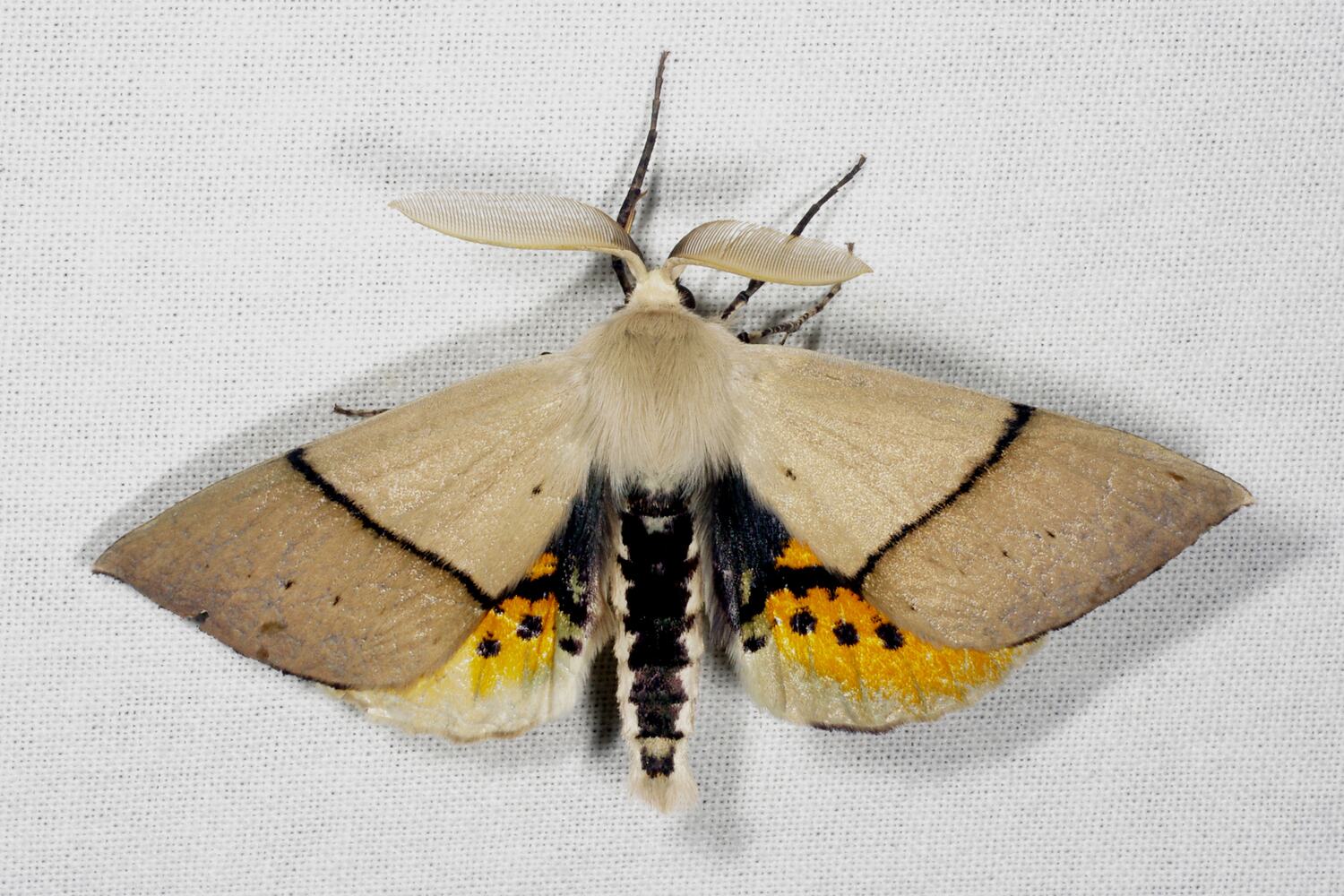
Gastrophora henricaria, moth, male. Great Otway National Park, Victoria. Photographer: Frank Pierce. Source: Museums Victoria. Copyright Museums Victoria / CC BY (Licensed as Attribution 4.0 International)
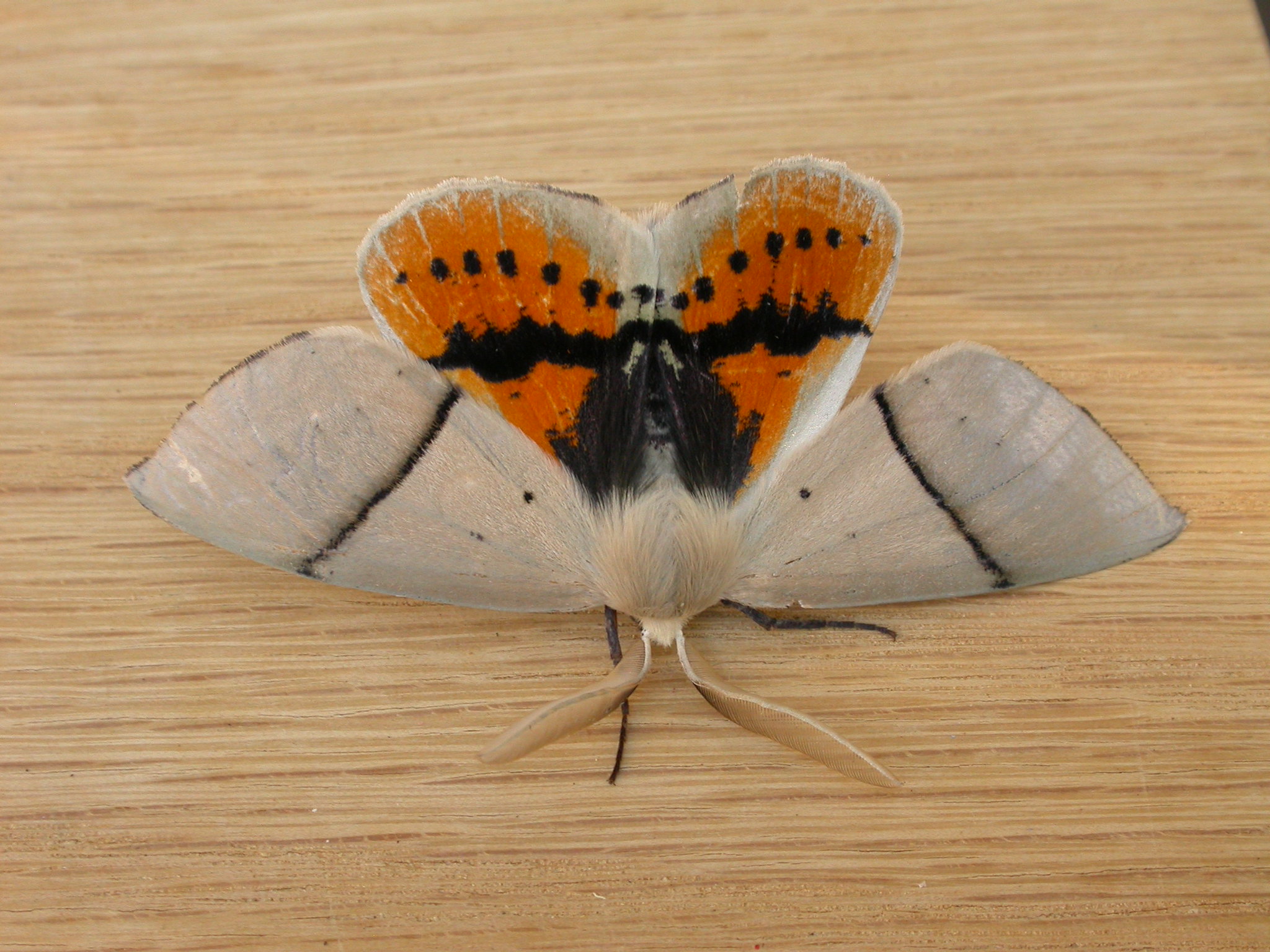
Gastrophora henricaria Guenée, 1857, to MV light, Aranda, ACT, 30 November/1 December 2008. Photo: Donald Hobern via Flickr
How long do eggs take to hatch?
The eggs for this moth are usually laid on eucalyptus leaves.
The female lays the eggs individually and she can lay as many as 220 eggs over a 2 week period. The eggs usually hatch after 4 - 8 days but can take as long as 3 weeks. The hatching larvae begin feeding and spinning immediately. They produce two lengthy tubes that run onto or into the infested material. The larvae can molt over 40 times and the larval stage can take between 1 - 24 months. The larval period can vary greatly because of the ability of the larvae to undergo diapause (phase of dormancy). This period of dormancy usually lasts between 8 - 24 months. Pupating larvae spin a quiver like pupal case which is thicker than the feeding tubes and closed at both ends. Pupation usually lasts between 2 - 6 weeks and the hatching adults normally live between 2 - 4 weeks.
Australia has around 22 000 species of moths. Around half of these have been scientifically named. This one has a lovely soft coat - imagine if there was a cloth made like this that you could wear.
The moths hatching out in the bathroom reminds us of a few years back around this time of year, when we had a huntsman mumma deposit her eggs in the bathroom. Soon we had tiny tiny spiders everywhere - but they went outswide when we opened the window - off into the Great Outdoors to continue the yearly cycles of insects and spiders and all those other tiny living things we share the world with.